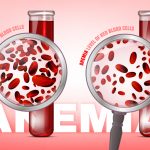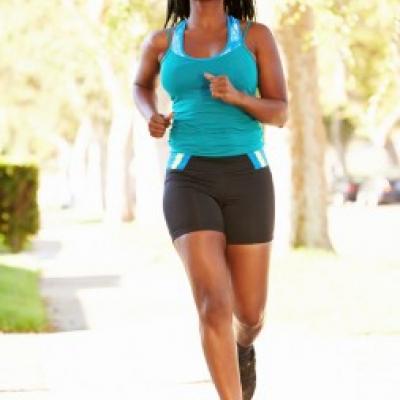- Exercise affects our relationship with food in both physical and psychological ways.
- When starting a new exercise routine, you might believe you can eat more calories than you need, making it difficult to achieve weight loss (if that’s your goal).
- Health experts say planning meals and being aware of how exercise impacts our appetite and perception of food can make lifestyle changes easier.
Restrictions due to the COVID-19 pandemic have made it more challenging to exercise as often (or as intensely) as some people did before.
In fact, many of us have found ourselves practicing a more sedentary lifestyle, gaining unwanted weight over the past year.
But as restrictions ease, a number of us have started thinking how to approach losing weight and embracing exercise in a healthy, measured way.
New research published in the journal Nutrients may make that task easier.
The study examined the connection between physical activity and its effects on both how and what we eat.
The findings offer some interesting insight into our relationship with fitness and food, and may help provide a clearer road map for people looking to make lifestyle changes.
What the research shows
For the study, researchers from the Technical University of Munich (TUM) and the University of Nebraska surveyed 41 healthy adults — 23 women and 18 men — between ages 19 and 29.
The participants had an average body mass index (BMI) of 23.7. This is an estimate of body fat based on height and weight.
Generally, a BMI over 25 indicates a person might be “overweight.”
They were then randomly assigned either a 45-minute session of exercise or a 45-minute rest period at their first visit. They would then switch and complete the opposite session at their second visit with the researchers.
During each visit, those assigned to the exercise group were given electronic questionnaires before physical activity about how hungry or full they were, their preferred amount of food to eat, and a choice between types of food that differed in how long it would take to eat them.
The participants would then let the researchers know what their preferred food quantities were by writing down the portion size they would like for each type of food item.
The researchers collected these preferences for both immediate and later consumption of the food after 4 hours.
Once they answered this questionnaire, participants would complete their 45 minutes of exercise on a bicycle ergometer. Right after finishing, they would complete the questionnaire a second time and then again after a 30-minute recess.
Those who weren’t in the exercise group still completed all three rounds of questionnaires, but instead of 45 minutes of exercise, they had periods of rest.
The results?
The researchers found that exercise offered a greater increase in food quantities people chose. This was both right after exercise and then 30 minutes later.
They also found that exercise resulted in more desire for immediate consumption right after finishing their workout and 30 minutes after.
“Most surprising to us was that the increase in — hypothetical — preferences for food amount and immediate consumption were already apparent, albeit not as strong, immediately after the exercise bout,” study author Karsten Köhler, PhD, professor of exercise, nutrition, and health at TUM, told Healthline.
Köhler said that his research team expected the increase would be noticeable after the 30-minute postexercise period, but anticipated no increase right after exercise.
He said this is due to what’s called “exercise-induced anorexia,” or a reduction in a person’s sense of hunger or appetite during and right after exercise.
This phenomenon is caused by anorexigenic hormones and reactions in appetite-stimulating hormones as a result of exercise.
“However, the fact that increases were less robust immediately after exercise when compared to 30-minute postexercise somewhat validates our initial assumption,” he added.
When asked why someone might overeat or eat higher quantities of food after exercising, Köhler said we generally know that the body responds to both psychological and physiological cues from exercise.
The psychological involves the sense of seeking a “reward” for completing a workout, while the physiological derives from metabolic and endocrine cues from your body that “stimulate food intake in order to compensate for the increased energy expenditure of exercise,” he said.
Why managing food and exercise can be challenging
The research done by Köhler and his team is certainly timely.
The World Health Organization (WHO) reportsTrusted Source that obesity — defined as a BMI of 30 or higher — has tripled globally since 1975, and that 39 percent of adults 18 and over were overweight, according to 2016 figures.
About 13 percent of these people were living with obesity.
Concerns over weight and whether people are practicing enough physical activity have only been exacerbated during the pandemic.
Another recent study showed 61 percent of U.S. adults gained weight during the current health crisis, citing stress, lack of activity, and unhealthy shifts in eating habits as main drivers for weight changes.
When asked how common it is for people to practice the eating behaviors shown by the new study, Erica Sander, an exercise physiologist at the University of California, San Francisco (UCSF), said that “your body is smart, it will want to replace the energy it used.”
“The highly palatable foods, like pizza, can be more appealing when you are ‘famished’ from a workout. If you are trying to lose fat mass and continuing rewarding every workout with extra calories, the scale won’t budge,” she told Healthline.
Sander, who wasn’t affiliated with the new study, said that “fat loss is not a math equation of calories in and calories out, it’s more like a chemistry set — yoga, running, french fries, kale, stress from work, and a comfy couch at home all have a different impact on hormones in your body.”
“In order to lose weight, you need to maintain a caloric deficit, which is mainly driven by reduced calorie intake,” Sander explained.
David Janke, an exercise physiologist at UCSF, added that most people know in general what they should or shouldn’t eat after a workout.
“I think there is a portion of people that exercise so they think they can eat whatever they want. However, this is a huge misconception that people have. To lose weight you must consume less calories than your body is using,” he told Healthline, echoing Sander.
Janke used the example of someone doing a big workout that burns 600 calories, such as an hour of vigorous cardio exercise. Following that physical activity, they then consume a large jelly doughnut that’s also roughly 600 calories.
“The hard work and exercise they did is now a wash because consuming a food that has literally no nutritional value and tons [of] calories puts the person right back where they started before the hour of cardio,” said Janke, who also wasn’t affiliated with the new study.
“A huge portion of losing weight comes from what you eat,” he added.
What you can do to make healthy changes
Köhler said that planning your postexercise snack or meal before you actually work out might be a good way to go, rather than impulsively opting for those doughnuts.
“Secondly, we also saw that there is a rather large inter-individual variability. Some participants wanted much more, others wanted less,” he said.
“That way, not everyone needs to follow my first advice. However, based on what we know from the literature and also from some preliminary analyses of our data set, those who are more likely to overeat following exercise also tend to have a higher weight/BMI,” Köhler explained.
Janke recommends you try to eat your meals at the same time each day. This allows your body to “know” when food is coming, and it can have something of a domino effect, helping with your appetite, digestion, and the rate at which your body processes fat, sugar, and cholesterol.
“I also recommend that if someone is trying to lose weight and really has to have an unhealthy calorie-dense meal, then they should consume that meal for breakfast,” Janke added. “Giving your body a chance to use those calories throughout the day and for the exercise session.”
Sander agreed with the above points, saying that having a plan is key. You should always plan to fuel your exercise as well as your recovery from exercise.
“Your plan doesn’t have to be stacked containers of meal prep in the fridge, it can start by only buying the food that fits your plan,” she added.
What about recommendations for go-to foods?
Janke encourages people to have a snack of some kind within 30 to 45 minutes after their workout. He said that’s the crucial anabolic window when it’s best to refuel your muscles after exercise.
“A few of my go-to recommendations for a postexercise snack include: apples with a natural nut butter — no additives — hummus with carrots and broccoli, plain organic Greek yogurt with berries, and almonds with sweet potatoes,” he said.
Sander said it really depends on the individual.
It varies depending on that person’s nutritional needs and the kinds of exercise they’ve just completed. A heavy gym session or a long bike ride might require completely different “fuel” before and after workout.
Sander also asserted that “snacks and meals are different.”
“Some people swear they love a green protein shake after a workout where I usually prefer to have a meal. One of my first suggestions that fits many diet styles is to add more veggies and drink water,” Sander said.
“As a mountain biker, I need to have a plan for pre-, during, and post-rides. I like having a stack of waffles in the freezer, both sweet and savory; and it’s always a crowd pleaser if you bring enough to share,” Sander added.
Find a plan that you’re comfortable with and that works for you
Both Janke and Sander said the pandemic we’ve been living through has certainly made life more complicated — especially when it comes to approaching overall health, exercise, and nutrition.
“The pandemic has created a unique situation where a lot of people are gaining weight. I believe there are several factors that contribute to the recent gain in weight seen in many Americans. Factors such as stress eating and increased inactivity due to the inability to do the physical activities people once did,” Janke said.
“Gyms have been closed, group exercise classes have been canceled, and the push to socially distance ourselves have made it harder for a lot of Americans to get the recommended amount of physical activity they should be getting,” he added.
Sander said that it’s been a challenge for many this past year, especially with the loss of a sense of routine.
“Today is a great day to start: ‘Can you find an activity that you are comfortable with?’” she said.
Source: https://www.healthline.com/health-news/61-percent-of-americans-say-they-gained-weight-during-the-pandemic






